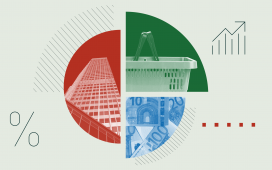Unlock the Editor’s Digest for free
Roula Khalaf, Editor of the FT, selects her favourite stories in this weekly newsletter.
Whatever one thinks about the merits of bitcoin, one thing is clear. It has a huge environmental impact.
So far this year, computers used to ‘mine’ the cryptocurrency have soaked up 146 terawatt hours (TWh) of electricity, according to the Cambridge Bitcoin Electricity Consumption Index.
That’s more than the annual electricity used by, say, Sweden. And with bitcoin prices hitting $100,000, interest in mining the stuff is bound to increase.
So it is cheering to see that at least one crypto group — US-listed $8.5bn Mara Holdings — has come up with a green way to mine bitcoin.
Specifically, Mara has bought a wind farm in Texas. It plans to produce its bitcoin there when the wind blows, and expects to operate around 30 per cent of the time. Tokens produced this way would have near-zero carbon emissions.

From a financial standpoint, this is not a strategy that makes sense for most of the mining world. The sizeable capital cost of the machines used to mine bitcoin needs to be spread out over as much production as possible.
With bitcoin prices high and energy prices relatively low, it very rarely makes sense to switch production off.
The newest generation of computers produce 12.9 bitcoin a year for every 8760 MWh of electricity, according to Aurora Energy Research. At $100,000 per bitcoin, that’s $147 per MWh. By comparison, US wholesale electricity prices average around $40/MWh.
Yet Mara has two things going for it. The first is that the plant it bought is in a sparsely populated area, with limited transmission capacity and thus few buyers for its output. Mara may have snagged it on the cheap.
Secondly, Mara is using old, depreciated computing equipment. While less energy efficient than the current crop, this doesn’t matter if the energy cost is near zero. And because the capital cost will also be negligible, it does not matter that it is spread out over fewer hours of operation.
While Mara expects to stop mining when the wind dies, it could always supplement its energy input with some less-than-green electricity from the grid if the price is low enough. After all, it is not obvious there is a market for truly green bitcoin.
While the group has found a way to make money from green bitcoin, the supply of struggling power plants for miners to snap up is probably limited.
But there are other areas, in Texas and elsewhere, where renewable energy supply exceeds demand and prices are relatively low — enough that even part-time mining with older equipment makes sense. This is not an endlessly replicable strategy. But as far as it goes, it is a nifty trade.
camilla.palladino@ft.com










